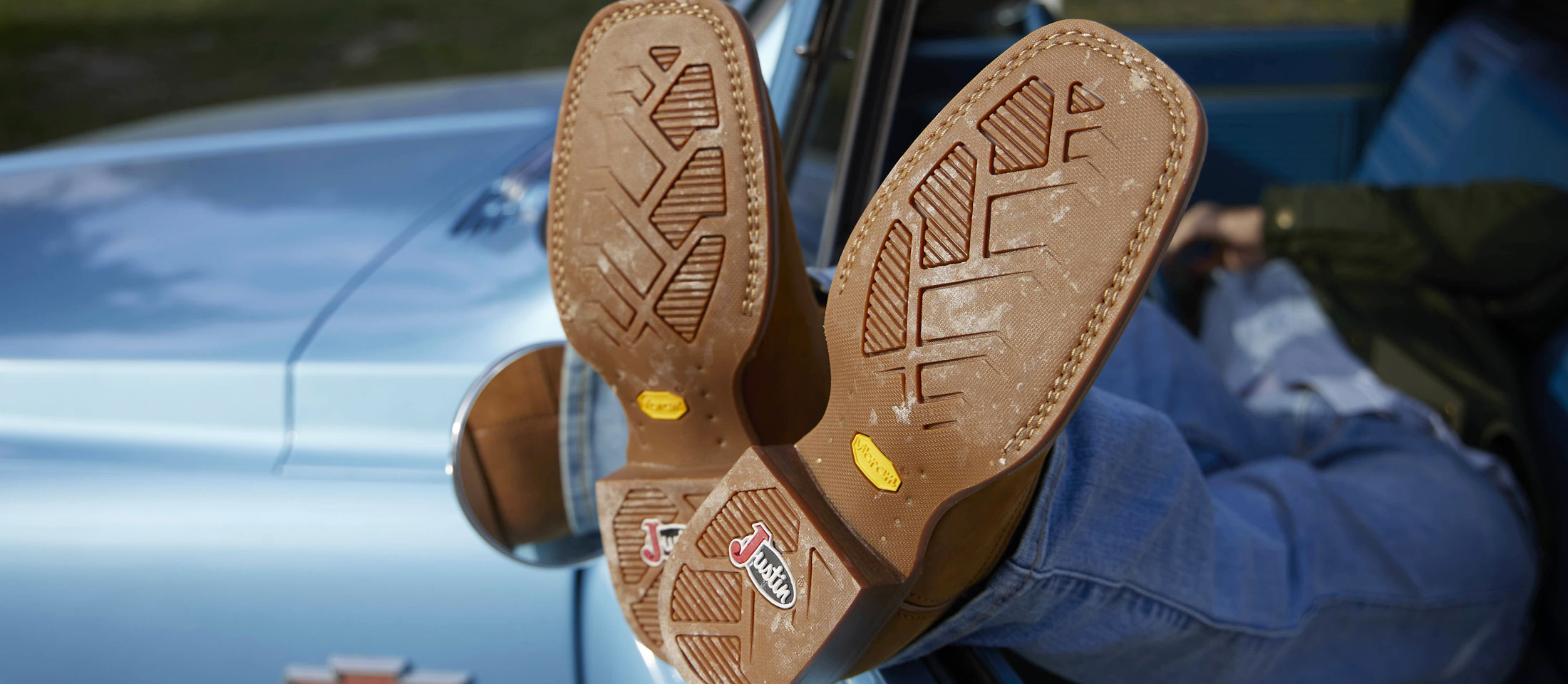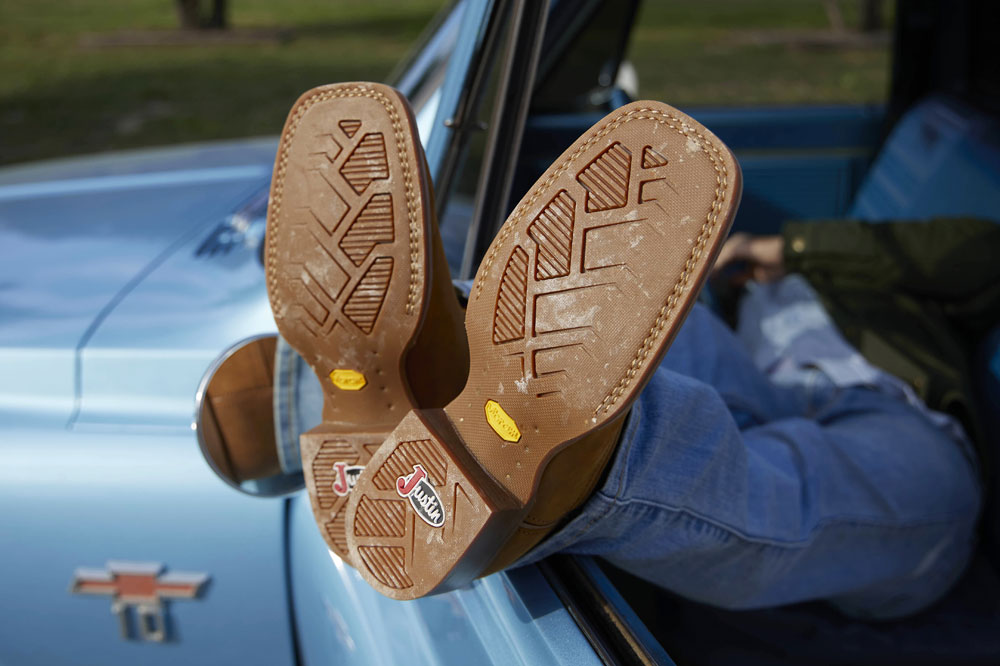Finding the Ideal Fit for Cowboy Boots and What to Avoid


How Cowboy Boots Should Fit (And What to Avoid) – Covering the Basics of Comfort and Support
When it comes to cowboy boots, the fit is everything. Whether you're heading out to the ranch, attending a rodeo, or just looking to add some Western style to your everyday wardrobe, getting the right fit is crucial for both comfort and support. Cowboy boots are made for durability and style, but if they don’t fit properly, they can cause discomfort and even lead to foot problems.
Here’s a breakdown of how cowboy boots should fit and what to avoid, ensuring your boots deliver the perfect balance of comfort, support, and style.
The Ideal Fit for Cowboy Boots
When trying on cowboy boots, there are a few key areas to focus on to make sure the fit is just right. Here's what you should look for:
1. Heel Fit – Slight Heel Slip is Normal
Your boots should feel snug around your heel, but a slight heel slip (about ¼ to ½ inch) is perfectly normal. As you walk, the heel will naturally settle into place. This movement allows for flexibility and prevents your foot from being cramped. If your heel is slipping too much (more than ½ inch), your boots might be too big. If there’s no slip at all, they could be too tight.
What to Avoid:
- Excessive heel slip: More than ½ inch of movement means the boots are too big.
- Heel digging into your foot: This could signal that the boots are too tight.
2. Snug Instep – But Not Too Tight
The instep is the top of your foot that runs across the arch. When putting on cowboy boots, the instep should feel snug—but not overly tight. You should be able to comfortably slide your foot in, and the boot should hug your foot without causing any pressure or discomfort. Over time, the leather will stretch, but it should feel comfortable right from the start.
What to Avoid:
- Painful pressure: If the instep feels tight or uncomfortable, the boots might be too small, or the width could be wrong.
- Excessive looseness: If you can easily slide your foot in and out, the boots are likely too large.
3. Toe Box – Room for Toes to Move
The toe box is the part of the boot that covers your toes. You should have about a thumb’s width of space between your longest toe and the tip of the boot. Your toes should be able to wiggle slightly without feeling cramped or pinched. The toe box should provide a comfortable amount of room while still keeping your foot secure.
What to Avoid:
- Pinched toes: If the boot feels tight or your toes are squeezed together, the boots are too small.
- Too much space: If your toes slide around or feel too far from the tip of the boot, the boots are likely too big.
4. Arch Support – Fit for Comfort
Your boots should offer adequate arch support to ensure comfort throughout the day. Cowboy boots often have built-in insoles that offer extra cushioning. If you’re going to be on your feet for long periods, the arch should feel secure and supported. If it feels flat or you notice discomfort after wearing them for a while, the arch support might not be enough.
What to Avoid:
- Flat arches: If your feet feel fatigued or sore after wearing the boots, they may not provide enough arch support.
- Overly high arches: If the boot’s arch feels like it’s digging into your foot, it might be too high.
5. Overall Footbed – Flat and Secure
The footbed should provide a flat and secure fit, with no room for excessive movement. Your foot should feel well-supported with no pressure points. A loose footbed can lead to blisters and discomfort, while a footbed that’s too tight can cause pain, especially in the toes and arch.
What to Avoid:
- Excessive movement: If your foot slides around, your boots are too loose.
- Tightness: If you feel like the footbed is too narrow or tight, it could cause blisters or cramps.
Additional Tips for How Cowboy Boots Should Fit
- Don’t Forget the Break-In Period: New cowboy boots might feel stiff at first. This is normal, and with time, the leather will soften and mold to your foot.
- Consider the Width: Cowboy boots come in different width options (such as B for narrow, D for medium, and EE for wide). If the length feels right but the fit is off, it could be a matter of the width.
- Check the Upper Fit: The upper of the boot should feel snug around your calf without causing discomfort. If the upper is too tight or too loose, it may affect the overall fit of the boot.
- Walk around and check for comfort: Take a few steps and notice how the boots feel as you move. The ball of your foot should align with the widest part of the boot for a natural, comfortable fit.
- Use the boot pulls or a boot jack: For pull-on styles, use the side loops to help slide your foot in firmly. For lace-up boots, loosen the laces before slipping them on, then tighten for a secure fit. If they feel snug at first, that’s normal because new boots will stretch and mold to your feet with wear.
What to Avoid in your Cowboy Boot Fit
- Too Tight or Too Loose: A boot that’s too tight or too loose will be uncomfortable to wear for long periods and may cause blisters, foot fatigue, and long-term issues.
- Wrong Arch Support: If you need extra arch support or cushioning, ensure the boot provides this feature, or consider using custom insoles.
- Excessive Break-In Time: While all boots need some break-in time, they shouldn’t cause intense discomfort. If your boots feel unbearable after wearing them for a few days, they may not be the right fit.
Find Your Perfect Cowboy Boot Fit
Cowboy boots are an investment, so getting the right fit from the start matters. They should feel snug without being tight, with enough room for your toes and solid arch support. If you're looking for a pair that feels right and holds up over time, check out our cowboy boots and cowgirl boots. With a wide range of sizes, widths, and styles, they’re made for comfort and built to last.